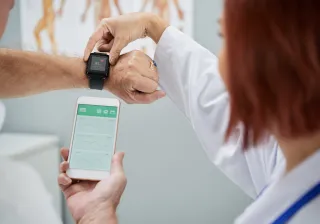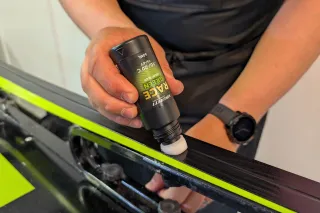It’s a hot summer day. The sun is shining and it would be great to go swimming, but there is something green floating in the water. Is it blue-green algae? A blue-green algae test developed by VTT gives you the answer. Innovations can sometimes have very concrete implications for the lives of many of us, and the blue-green algae test is an excellent example of this.
”This easy-to-use blue-green algae test is a good way to check if water is safe for swimming or domestic use, because water containing blue-green algae is not suitable even for throwing on the sauna stove”, notes researcher Liisa Hakola, who took part in creating the test.
This innovation is therefore an especially appropriate invention for consumers and, for example, municipal health inspectors, because it allows everyone to test how safe the water is. Reading the test is very simple – like with a pregnancy test, the result is read based on lines that appear. One line, and the test is negative, which means that it is possible to plunge into the water without worries. Two lines means that the water contains toxic blue-green algae.
The test is based on an antibody that attaches to the blue-green algae toxin. This triggers the change in colour. The antibody was developed by the University of Turku, and VTT was responsible for the testing principle. The journey ultimately took nearly 10 years to complete from the first steps taken in the project to get the product onto the store shelves. This was made possible by Salofa.
The project left the researchers with what are literally warm memories:
”We had a few working days in August when it was hot, and we collected blue-green algae samples from lakes. We were hanging around there at the end of a pier, wading in rubber boots to get good samples. We also tried out the test on the spot. This raised the curiosity of passers-by, as many came to ask us about the blue-green algae situation, thinking that we were health inspectors”, Hakola recalls and continues:
The samples were, of course, taken to the University of Helsinki for laboratory analysis, and it was great that our tests had given results that seemed to go in the right direction already by the water.”
Hakola also mentions a few high points, one of which was a press release in the final stages, and an interview for the public broadcaster Yle, which attracted much attention, and many reached out to the team. Hakola says that she is still being contacted now, five/six years later. Many of those getting in touch are from outside Finland, especially the United States and Australia. It remains to be seen if the blue-green algae test might conquer the world one day.

Printed intelligence and green electronics
The blue-green algae test represents printed intelligence, and in addition to concrete use and a focus on the consumer, it has drawn more attention to the prospects for printed intelligence and electronics. Although printed intelligence and electronics mainly evoke the traditional thick green circuit card platform, there is much more to it. For example, many things other than a circuit card can function as a substrate, or platform, such as paper, which is a more environmentally friendly solution. In addition, the technology in a blue-green algae test can also be used in other applications. With similar technology, diabetics could measure their blood glucose levels. Now Hakola is busy with the ECOtronics project for more environmentally friendly electronics, and there seems to be no limit to what remains to be done in this area.
Ultimately, a good feeling came mainly from the exemplary commercialisation with Salofa, and from the knowledge that the invention would not just be consigned to a drawer and would actually end up being used by people.
”What VTT actually does might seem quite abstract for many. For example, many of my own relatives do not necessarily understand what I actually do for a living. One bonus is that when the blue-green algae test appeared on the news, it sparked interest in my work, and people understood possibly a little better what we at VTT do”, Hakola says with a smile.
Tests are available in pharmacies and hardware stores, for example.







